The Tiny Bodyguard and the Gentle Giant: Nature’s Unlikely Alliance
Picture a two-ton rhinoceros grazing peacefully on the sun-drenched African savanna. It’s a vision of prehistoric power and quiet strength. Now, look closer. Perched confidently on its broad, leathery back is a small, energetic bird, hopping about as if it owns the place.
This isn’t just a bird hitching a free ride. This is the oxpecker, and its relationship with the rhino is one of nature’s most fascinating and vital partnerships. It’s a classic story of symbiosis—a real-life alliance where a tiny bodyguard helps a gentle giant survive.
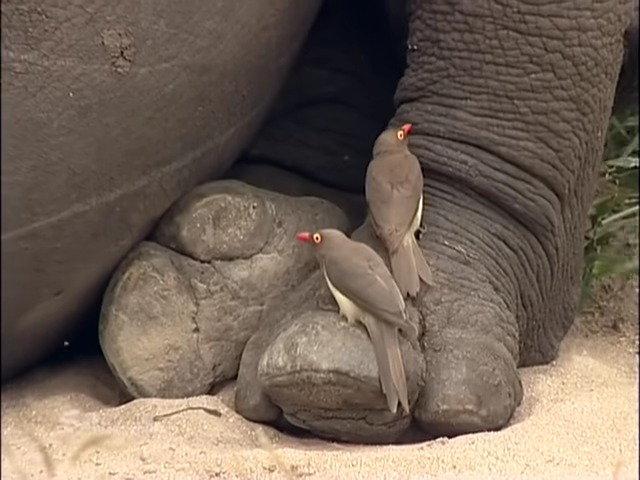
The Original Pest Control Service
At first glance, the oxpecker’s job seems simple: it’s a mobile cleaning crew. A rhino’s thick hide is a paradise for pesky parasites like ticks, fleas, and biting flies. These critters are not only irritating but can also carry diseases. For the rhino, getting rid of them is a constant challenge.
Enter the oxpecker. With its sharp beak and keen eyes, the bird meticulously picks off and devours hundreds of these parasites every single day. It’s a walking, all-you-can-eat buffet for the oxpecker and a much-needed spa day for the rhino. The bird gets a meal, and the rhino gets relief from its unwanted guests. It’s a clear win-win.
A Winged Alarm System
But the oxpecker’s most crucial role is not as a groomer, but as a sentinel. Rhinos, for all their size and strength, have one significant weakness: terrible eyesight. They can struggle to spot danger until it’s dangerously close.
The oxpecker, on the other hand, has excellent vision and is constantly on high alert.
When it spots a potential threat—be it a lion stalking in the long grass or, more critically, a human poacher approaching—the oxpecker leaps into action. It lets out a sharp, chattering hiss or a rattling cry. This distinct sound acts as an immediate, life-saving alarm for its massive host.
The rhino instantly knows that the sound from its trusted partner means danger. It will stop grazing, lift its head, and turn to face the threat or prepare to flee. In a world where poaching remains the single greatest threat to rhino populations, this tiny, feathered lookout can be the difference between life and death. In fact, studies have shown that rhinos carrying oxpeckers on their backs are significantly better at detecting and avoiding humans than those without their avian bodyguards.
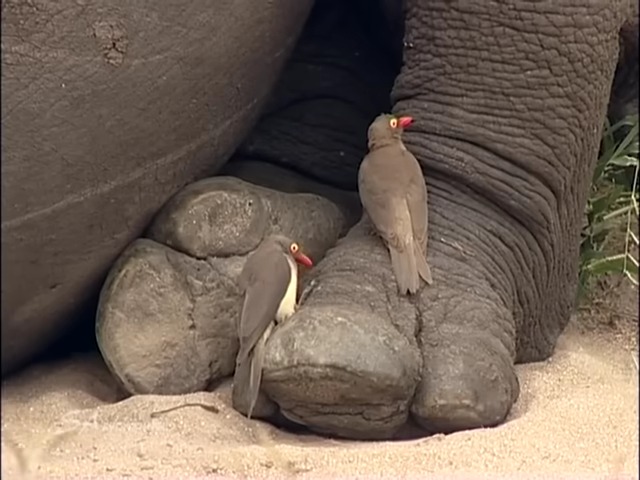
A Complicated Friendship
Now, nature is rarely simple, and this relationship has its complexities. Oxpeckers are sometimes called “vampire birds” because they don’t just eat parasites; they also have a taste for blood. They will often pick at a rhino’s existing wounds, keeping them open to drink the blood and eat the flesh.
So, is the oxpecker a helpful friend or a freeloader with a dark side?
Most ecologists believe that despite this slightly parasitic behavior, the benefits for the rhino far outweigh the costs. The irritation of a pecked wound is a small price to pay for being saved from a poacher’s bullet or a lion’s ambush. The security and pest-control services provided by the oxpecker are simply too valuable to lose.
A Lesson in Interconnection
The partnership between the rhino and the oxpecker is a beautiful reminder of how interconnected life is in the wild. It shows us that survival isn’t always about being the biggest or the strongest. Sometimes, it’s about the alliances you form and the friends you keep, no matter how different they may seem.
As we work to protect magnificent species like the rhino, we must also remember the smaller, less obvious creatures that are essential to their survival. Protecting the rhino means protecting its entire ecosystem—including the loud, feisty, and fiercely loyal little bird that rides on its back.
What are some of your favorite examples of animal partnerships? Share them in the comments below!
****More Related Articles***
Day 13 – Grooming services provided by Oxpeckers on tick-infested
Nature’s Strangest Spa Day: The Complicated Business of the Oxpecker
Imagine this: you’re a massive Cape buffalo, wandering the vast African savanna. The sun is hot, and you’re carrying some unwelcome passengers—dozens of pesky, blood-sucking ticks clinging to your hide. You can’t exactly reach your own back for a good scratch. Just then, a small, starling-like bird with a bright red beak lands gently on your shoulder. Relief! The mobile spa service has arrived.
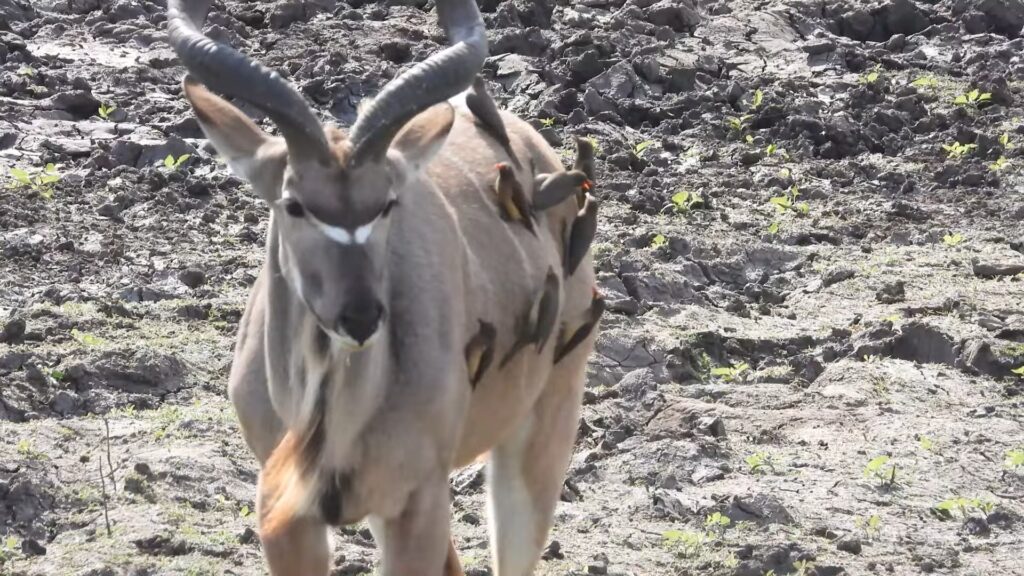
This is the daily reality for many of Africa’s largest mammals, thanks to a unique and fascinating bird: the oxpecker. These tireless little groomers provide one of the most visible—and most debated—cleaning services in the entire animal kingdom. But is it a five-star, mutually beneficial treatment, or is there a darker side to this deal?
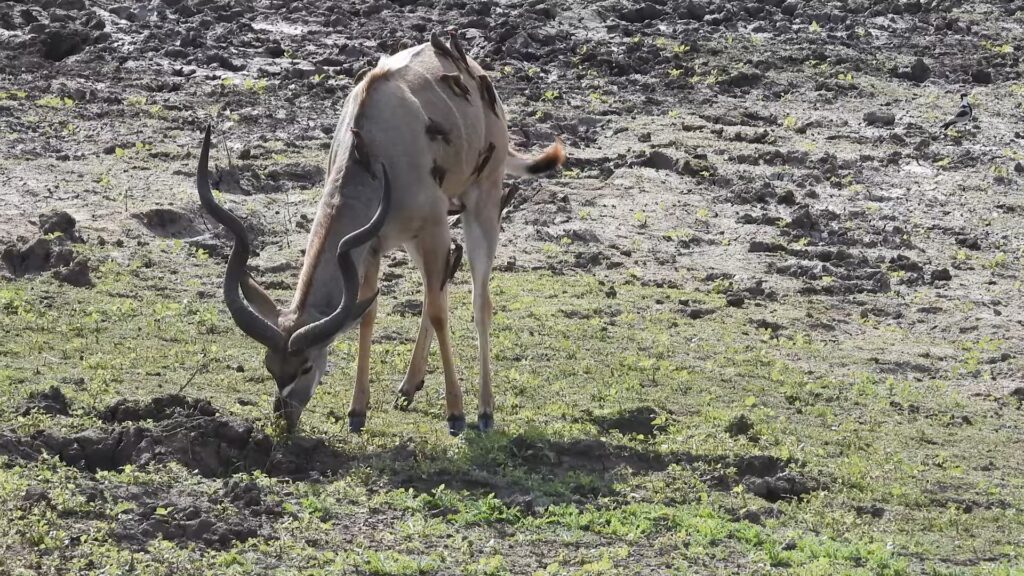
Meet the Groomers: The Tireless Oxpecker
There are two main species on the job: the Red-billed and the Yellow-billed Oxpecker. They are perfectly adapted for their work. With sharp claws for gripping onto the hides of their moving “clients” and strong, flattened beaks, they are built to probe, pick, and pluck.
Their clientele is A-list: rhinos, giraffes, buffalo, hippos, zebras, and various antelope species. You’ll rarely see an oxpecker on the ground; they spend almost their entire day hitching a ride, providing their specialized services.
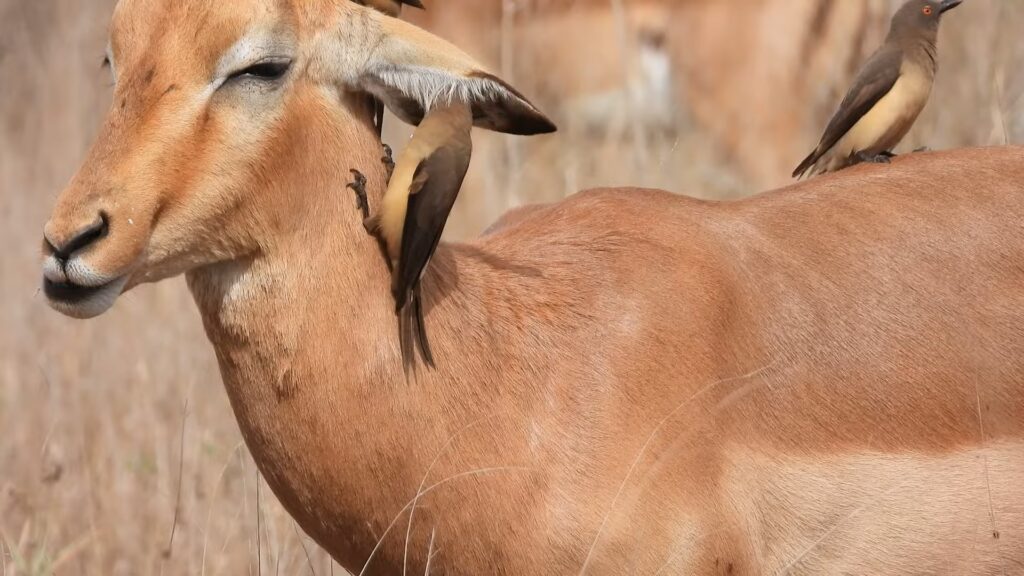
The “All-Inclusive” Spa Package: What’s on the Menu?
For decades, the relationship between oxpeckers and their hosts was hailed as the textbook example of mutualism—a partnership where both parties benefit. The oxpecker’s service menu is quite extensive:
- Tick Removal (The Main Event): The primary service is pest control. Oxpeckers meticulously comb through their host’s fur, plucking off ticks and other parasites. A single adult oxpecker can eat hundreds of ticks in a day. For the host, this means relief from irritating bites and a lower risk of tick-borne diseases. For the oxpecker, it’s a high-protein buffet.
- Wound Care and Dead Skin Removal: Oxpeckers also clean their clients’ ears (removing wax and parasites), trim away flakes of dead skin, and dabble at open sores. They are diligent, leaving no patch of hide uninspected.
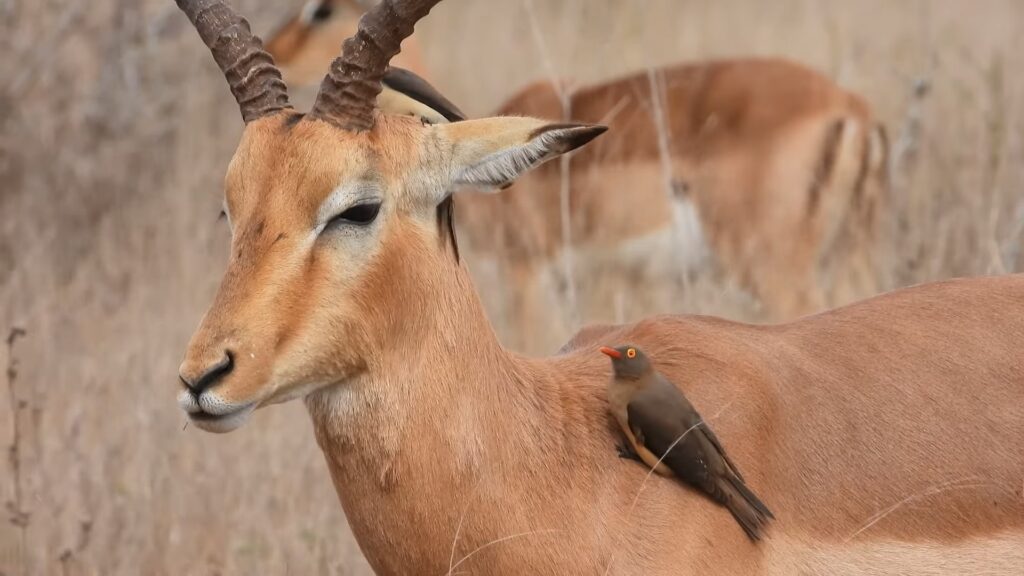
Reading the Fine Print: When the Spa Treatment Gets Complicated
But like any service with glowing reviews, it’s worth reading the fine print. More recent studies have revealed that the relationship isn’t as perfectly symbiotic as we once thought. In fact, it borders on parasitism.
The problem? Oxpeckers don’t just love ticks; they have a taste for blood.
Their name for this behavior is vampirism. They will use their sharp beaks not just to remove parasites, but to actively pick at and keep wounds open. While they clean the wound, they also drink the blood seeping from it. This prevents the wound from healing quickly and can lead to infection.
This explains why some animals want nothing to do with them. Elephants and certain waterbucks, for instance, are known to aggressively shoo oxpeckers away. They’ve seemingly decided that the cost of the “service”—having your wounds kept open—isn’t worth the benefit of tick removal.
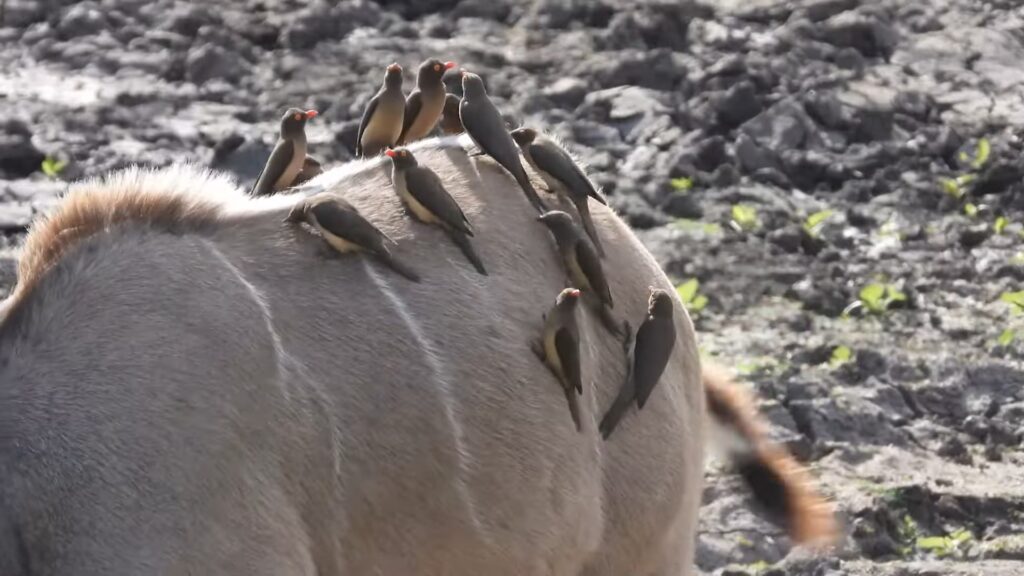
The Bonus Feature: A High-Tech Alarm System
Despite the blood-drinking habit, many animals continue to tolerate the oxpeckers. Why? Because the birds offer a crucial bonus feature: a built-in early warning system.
Oxpeckers have excellent eyesight, far better than that of their often near-sighted hosts, like the rhinoceros. When a potential threat—such as a lion, hyena, or human—approaches, the oxpeckers will let out a loud, hissing, chattering cry. This alerts the large, lumbering mammal to danger long before it would have noticed it on its own.
In Swahili, the oxpecker is known as Askari wa kifaru, which translates to “the rhino’s guard.” This name perfectly captures this vital security role. For a rhino, a little bit of blood loss from a wound might be a small price to pay for a life-saving warning against poachers or predators.
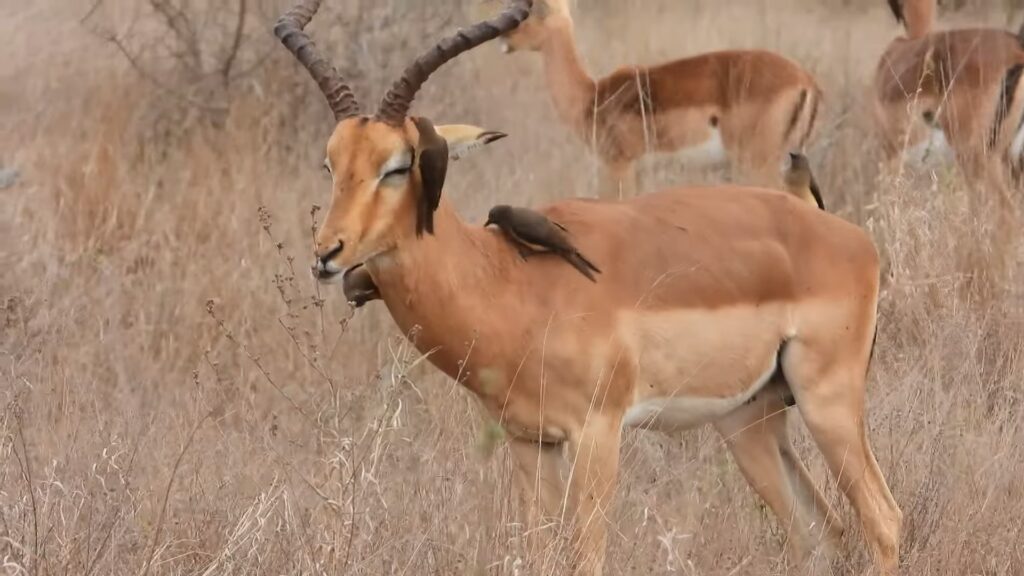
The Verdict: A Complex Contract, Not a Simple Friendship
So, are oxpeckers helpful friends or freeloading parasites? The truth, as is often the case in nature, lies somewhere in the middle. The relationship is less of a simple friendship and more of a complex, constantly renegotiated contract.
The oxpecker offers a package deal: pest removal and a top-notch security system. The price? A little bit of blood and the occasional irritated sore. Whether the deal is “worth it” depends entirely on the client. For a thick-skinned buffalo plagued by ticks or a rhino trying to avoid danger, the answer is a resounding yes. For an elephant that can handle its own pests, the service is simply not required.
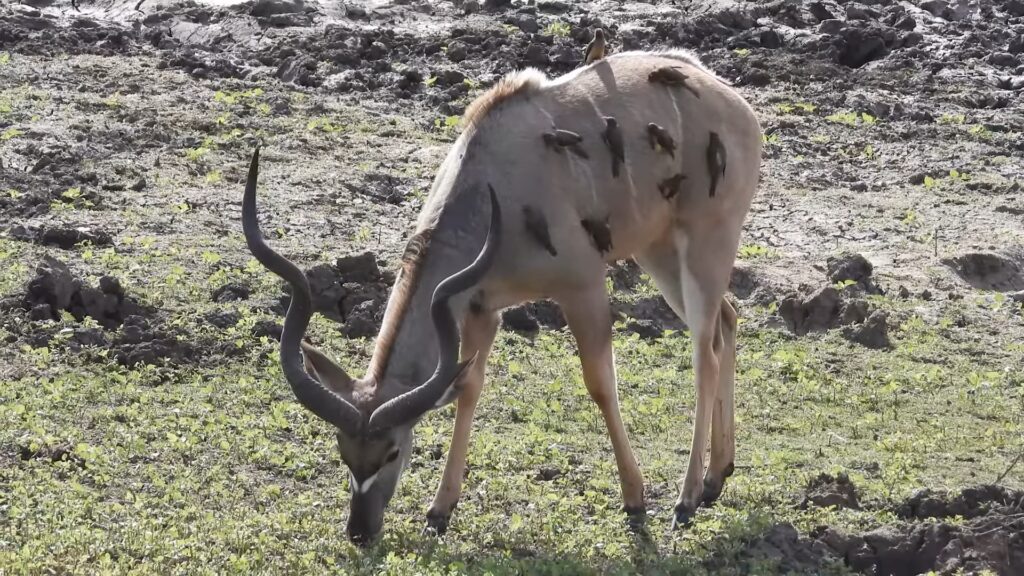
The next time you see a picture of a bird perched on a rhino, you’ll know it’s not just a cute photo op. It’s a glimpse into one of nature’s most fascinating and complicated business transactions, happening live on the African savanna.